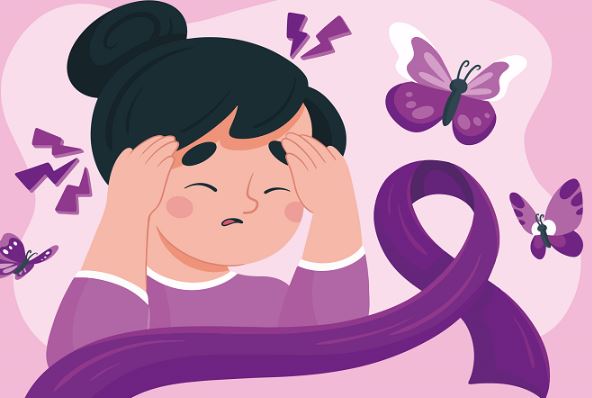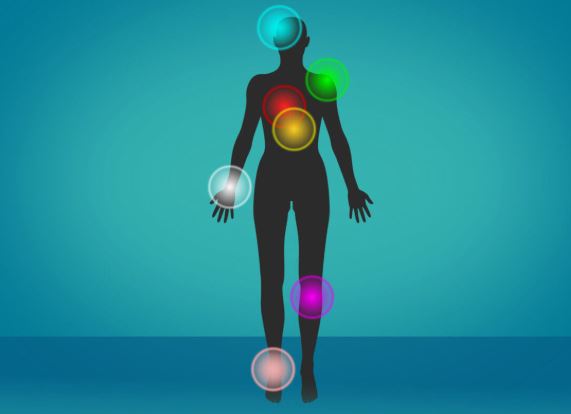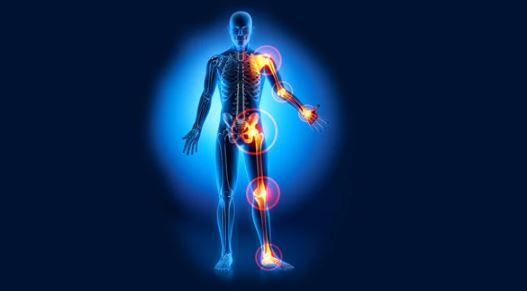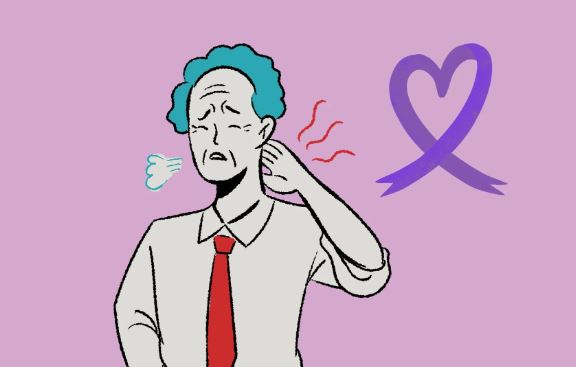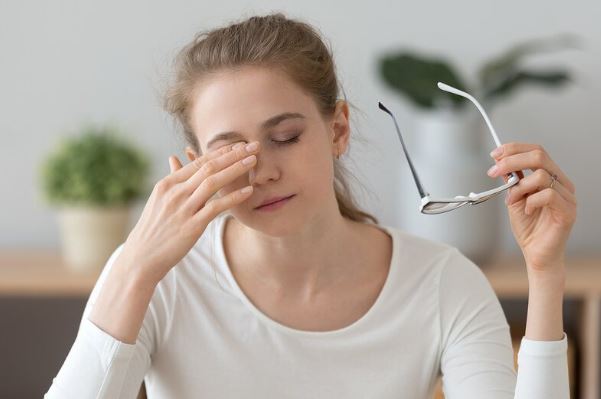Many people with fibro know all too well the intense pain from fibromyalgia headaches and/or migraines. The more one gets to know fibromyalgia, the more one understands the various and multiple parts of the body that are affected.
This is not your average head “ache” because of the unique qualities within fibromyalgia and the TRP’s (trigger points) that are commonly associated with head pain.
If you have fibromyalgia headaches or migraines, you know pain.
Although there are multiple causes for head pain, we know that many common factors must be addressed in order to lessen the severity and frequency of fibromyalgia headaches.
Are the TRP’s (trigger points) around the head, neck, and scapula area actually the cause of the head pain OR is it a stressor, perpetuating factor, or environmental exposure that initiates the pain?
Seasonal allergies can exacerbate headaches and increase pain within the entire fibro body. I also experience more head pain when it rains, and I will tell you that it can be very intense, triggering both trigger points, and the olfactory nerve, around CN1.
This has the potential to not only increase pain around the face and head, but in my case, I can smell and react to everything more intensely!!
When TRP’s (trigger points) are involved with head pain, it often “feels” more structural and some people may have a difficult time associating their environment as an instigator of pain.
Yet due to the fibro body’s sensitivity to toxins and stimulants, this can easily start a cascade of symptoms and resulting pain. (Severe fibromyalgia headaches interfere with the quality of life even more so because of the effect on the brain, eyes, nerves, and ability to think clearly)
Click here to Get these Products or Visit Fibromyalgia Store
When headache pain increases, you might also feel an increase in your pulse rate and even heart palpitations. This is not uncommon due to the direct effect on the nervous system. I’ve had this since a young age, I certainly get it.
In the U.S. alone, 78% of women (68% of men) suffer from debilitating headaches, and migraines affect about 15% of the population, according to Dr. Ty Thomas, (National Centers for Pain Management & Research).
Not to mention that brain fog (otherwise known as fibro fog in relation to fibromyalgia headaches) is exacerbated when headaches occur on a regular basis.
Seasonal headaches
There are seasons of the year that tend to bring on more headaches due to allergies, ragweed, and temperature changes. Spring and Fall are two seasons where symptoms can tend to escalate. Allergies can activate symptoms of fibromyalgia, just like toxins in any form exacerbate fibro symptoms.
Sometimes it may be necessary to limit outdoor activities during high allergy seasons or wear a face mask. I often recommend the company “I Can Breathe” for a protective face mask from toxins and allergens.
Another product that I often find helpful is the “Hot/Cold Migraine/Sinus/Tension Headache Head Wrap” shown below. The wrap contains beads that can be heated or cooled and applied to the head. And, guess what? It is so multi-functional that I also use this wrap around my knees.
I actually wear this compression a different way. I wear the ice or heat part on the back of my head which covers the fibromyalgia tender points on the lower back part of the head and then the slight compression is around the forehead which helps to increase blood flow
I prefer to use the beads in a cold state, but, alternating heat and cold are effective as well.
Factors in Fibromyalgia Headaches
Any type of chronic headache pain can be debilitating as this is where we think, express, and interact with the world around us. If you have fibromyalgia and recurring headaches, there’s no doubt that you know this kind of pain.
Suffering from chronic migraine myself since the age of 9, now 52, I sure do understand this pain and the additional symptoms that can be brought on by a migraine, including severe nausea, issues with eyes, coordination and cognition, and even vomiting when the pain escalates to a most debilitating point.
The trigeminal nerve which travels from the brain to the face can cause inflammation while any disruption within the hypothalamus (in the brain) can affect the blood vessels. Some people find relief using caffeine during a headache, but this can backfire in others due to the constriction of blood vessels.
What if your headaches are instigated by CFS/ME otherwise known as Myalgic Encephalomyelitis? This kind of headache displays itself with pain around the entire head, face, eyes and can increase swelling around the jaw and parotid glands just under the jaw.
Here, the immune system is involved and these types of headaches can come on quickly and intensely by exposure to environmental toxins such as petro fumes, fragrances, and/or chemicals of any kind.
Because people with chronic illness tend to be shallow breathers, we must pay attention to our breathing tendencies, as a lack of proper oxygen can bring on and intensify headaches of all kinds.
Click here to Get these Products or Visit Fibromyalgia Store
And again, for those of us with long-standing environmental illness or Multiple Chemical Sensitivity, headaches are often brought on by exposures to toxins in the environment, affecting our ability to breathe and relax normally.
What do we do when we are exposed?
Oftentimes, we find ourselves holding our breath. We are trying to avoid breathing in toxins, but this can easily exacerbate headache pain, and tension throughout the body. We need to avoid chemicals or fragrances in our home or work environment. Read more here about migraines and Chemical Sensitivity.
Fibro and the Migraineur
What is a migraineur?
Actually, many fibro victims fall into this category. A migraineur is a person with a sensitive nervous system, often light sleepers, affected by weather, toxins, odors, and bright lights. They are hardworking and attentive to their environment and the feelings of others.
They often have tight muscles and dysregulated blood vessels. Serotonin levels are also reduced during a migraine yet return to normal when the headache is resolved. This explains how migraines correlate so well with fibromyalgia and symptoms.
The Five Phases of Migraine
- The first phase of migraine is called the prodrome. During this phase, lights may begin to appear brighter, change in mental process, fluid retention, irritability, or craving certain foods. These symptoms and more can signal the beginning stage of migraine.
2. The second phase is called the aura. This is where a change in brain chemistry occurs. This nervous system disruption can last from minutes up to about an hour.
Vision changes can occur or see spots in front of the eyes, and weakness in extremities. It has now been found that this is not a constriction in blood vessels as once thought, but a disruption in brain chemistry.
3. The third phase is called the headache phase. This is where the pain and intensity take place. The pain may be pounding or on one side of the head. The nervous system becomes even more sensitive to light and sound.
The muscles in the back of the neck, and upper back become tense and painful, and more sensitive to touch. Mobility within the neck and jaw can become limited as well. The severity of this phase can last from 4-72 hours.
4. The fourth phase is the resolution phase. Oftentimes, migraines will be resolved with sleep, but can also linger for 1-3 days.
Vomiting is common in children who suffer from migraine, and this can sometimes stop or at least lessen the pain.
I will say, that in my case, the vomiting did not always lessen the pain.
5. The last phase of migraine is called the postdrome. This phase usually accompanies headaches that last a longer period of time, and not everyone will experience this phase. Similar to a hangover or the flu, the symptoms here include fatigue, lack of concentration, nausea, and muscle tenderness.
Understanding our individual triggers and the phases of migraines can support us in better managing this often-debilitating pain. There is always a ‘root’ cause and as a migraine sufferer since a very young age, I certainly know that environment has always been my biggest perpetuating factor. Toxins in various forms (chemicals, synthetic fragrances, petroleum fumes, etc.) often trigger the fibromyalgia headache or migraine and must be controlled. Thank you for reading…

Click Here to Visit the Store and find Much More….
For More Information Related to Fibromyalgia Visit below sites:
References:
Fibromyalgia Contact Us Directly
Click here to Contact us Directly on Inbox
Official Fibromyalgia Blogs
Click here to Get the latest Chronic illness Updates
Fibromyalgia Stores
